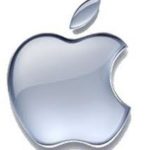This week Xcite Digital came across some fascinating predictions about the significant technological developments of 2016.
The source report1
The report is split into predictions across 5 key areas:
- Mobile – mobile device development, adoption, and usage, including hardware, platforms, vendors, and apps, and the key companies influencing the industry.
- E-Commerce – the key trends, strategies, and companies impacting how consumers discover, purchase, and receive products online.
- Digital Media – the demand, creation, and monetisation of digital content, including video, audio, images, text, and social media.
- Payments – the top developments, strategies, technologies, and networks that are disrupting how value is stored, managed, and transferred from one party to another.
- The Internet of Things – how businesses, consumers, and government entities are connecting their assets and objects to the digital world.
Ecommerce
Amazon will pull business away from its shipping partners. In the US Amazon has recently been building its own transportation and logistics arm and has started making household deliveries in its own Amazon-branded trucks. There are strong indications that Amazon no longer wants to rely on third- party shippers and to begin handling a greater share of its own packages.
Facebook will become a key enabler of commerce. BII expects Facebook to play a much larger role in retail in the coming year, building on its increased acceptance of more brands and retailers using its platform for selling merchandise during 2015.
Beacons will finally go mainstream. Beacons are small, wireless devices that allow brands and retailers to push mobile coupons and promotions to shoppers’ smartphones based on their physical locations. There has been a huge increase over the last couple of years in the use of shopping apps on tablets and smartphones and the extension of their use into proximity-based marketing systems such as beacons is inevitable.
The resurgence of affiliate marketing. Affiliate marketing – ie the rewarding of partners (or affiliates) by advertisers for each visitor or customer they refer – is one of the fastest-growing sources of revenue for online retailers. This growth is driven by mainstream media publishers looking for supplementary sources of and also influencer marketing (earned media – which continues to expand on social media.) Underpinning both of these trends is the continuing shift to mobile for both media consumption and commerce.
The Chinese retailer Alibaba will try to acquire or take a large stake in a US e-commerce company. Alibaba already has an expansive cross-border shipping and payments infrastructure in place, all it needs now is a US customer base. BII believes that eBay or Etsy would be its top targets as Alibaba has a similar business model ie marketplaces where people and businesses sell goods peer-to-peer.
Mobile
A major wireless carrier and cable TV company will merge in 2016. This could benefit both sides because cable TV companies have extensive Wi-Fi networks that could add capacity to wireless networks or provide better coverage indoors but they themselves are under pressure from streaming video on demand (SVOD) services so are looking for additional revenue streams to compensate for falling subscriptions.
Indonesia will join India as the next big smartphone market to watch out for. It has one of the fastest-growing user bases in the world: nearly 60 million of the country’s 250 million citizens (half of whom are under 30) will have smartphones in 2016 and this is expected to grow at a compound annual growth rate (CAGR) of 11.2% between 2016 and 2020, to reach ~100 million and become the fourth-largest global market.
Xiaomi will begin selling phones in the US. Known for making high-quality devices at a fraction of the price of most premium phones, like the iPhone, Xiaomi has grown to become the fifth-largest OEM in the world during 2015, but the signs are there that they are about to establish a footprint in the West. There’s a market for lower-priced, high-quality smartphones in the US, and Xiaomi is primed to take it in 2016.
The reduction in mobile service contracts will shorten the length of the smartphone upgrade cycle. This cycle is currently 2-3 years but is expected to decrease. Contracts are declining due to consumers purchasing devices directly from manufacturers and competition between carriers is increasingly intense. Two year mobile phone contracts are rapidly being replaced by a number of new programs, including Apple’s iPhone Upgrade Program, that allow consumers to “purchase” a smartphone by financing it at a monthly cost and upgrade the device after one year.
“Bring your own device” (BYOD) uptake will continue to increase as it did in 2015. and in 2016, BII expect to see a number of partnerships between companies like Apple and IBM aimed at enabling mobile devices to have a more useful application in many new industries. These enterprise app solutions are likely to see growth of over 100% in terms of volume and companies that have become BYOD by necessity will seek solutions to ensure security alongside mobile access for employees.
Digital Media
The mobile video wars will heat up, with BII predicting that Facebook will become the go-to place for short-form videos in 2016. They anticipate brands and media companies to accelerate the number of videos they publish directly to Facebook, and Facebook to eventually surpass YouTube in terms of video uploads and views. YouTube will remain a huge video player but rely heavily on its YouTube stars to drive video views and paid subscribers to its YouTube Red service.
Standards will be developed for online video views and tracking. During 2015, 50% of global mobile traffic coming from mobile video, but mobile video viewing lacks standards, and BII expect this to become a major point of contention in 2016. Marketers and publishers will start to demand some sort of standard to determine what constitutes a view and platforms will need to use different metrics to count video views. Subscription-based streaming services will also have to provide more information about viewing habits.
User experience will become a major factor in native advertising. The rising fear over ad blocking — particularly over mobile ad blockers — will lead advertisers and publishers alike to focus on improving the user experience. Native advertising (which includes native social, native video, and sponsored content) does not detract from the user experience, a migration to native could help redefine users’ perception of digital advertising, and, in turn, diminish the need for ad blockers.
Cable companies will continue to embrace streaming, but cost for consumers will rise. Many consumers are turning away from Pay-TV companies in favour of online and mobile viewing. This will cause large cable companies to make up for declining revenue by hiking up the price of broadband cable, and tiering their streaming services to offer some premium content at a higher price point.
Yahoo will sell its core business, possibly to a telecommunications company. BII anticipates that Yahoo will spin off its core business — digital properties, ad tech stack, and Yahoo Japan — in 2016. The most likely purchaser could be a large telecomms company that could use Yahoo’s digital presence and ad tech platform as a means of monetising its own user data.
Payments
Global banks will commit to a unified blockchain solution for inter-bank transactions. Blockchain technology — the same technology that underlies bitcoin — has the potential to eliminate the need for trusted intermediaries in financial transactions, thereby reducing the costs associated with those transactions.
Apple, Google, and Samsung will create commerce experiences around their payments products. Building on the mobile payments systems of Apple Pay, Android Pay and Samsung Pay, this will include an increased emphasis on loyalty, store cards, and coupons and probably also an in- store component that uses beacons to push offers to customer’s phones.
Business management apps housed on mobile point-of-sale (mPOS) devices will become a necessity for small businesses and there will be an increased focus on emerging app marketplaces. At the heart of this trend is business data. Apps that can generate actionable insights using this data will gain widespread adoption.
Mobile ordering apps will become an important transaction channel for quick-service restaurants (QSRs). They are introducing digital ordering platforms to increase average ticket sizes, order frequency, loyalty, and ultimately sales. 80% of the top 20 QSR brands in the QSR 50 offer or are testing some type of mobile ordering capability. Campaigns that use the customer data collected – such as loyalty programs and rewards – are driving up customer adoption.
Traditional financial institutions will respond to the threat of fintech startups by partnering with them. Legacy banks can respond to the threat of competition from non banks offering financial services either by building similar products in-house, acquiring their competitors, or forming partnerships. BII predict that banks will adopt a strategy of partnering with smaller fintech firms in order to leverage their services and bring them to a wider audience.
The Internet of Things
Two-thirds of new cars shipped in the US will be connected to the internet. In 2015, roughly 35%-40% of new cars shipped in the US were connected to the internet, and this strong growth is expected to continue through 2016.
The US will finally get federal guidance surrounding self-driving cars, leading many states to enact legislation. Lack of regulations has been one of the top barriers to self-driving cars hitting the roads in the US. California is set to be the first state to give consumers the right to ride in self-driving cars on public roads and it is anticipated that in 2016 the federal government will provide more guidance to states that are creating their own self-driving car regulations.
The growth of the IoT will increase the demand for cyber insurance policies in 2016. The growth of the IoT has now added another type of cybersecurity threat in which physical devices can now be hacked, have their information stolen, and even be remotely controlled.
As oil prices continue to crash, oil companies will look to IoT solutions to maximize efficiency throughout the supply chain. Oil prices have crashed over the past year due to an oversupply of oil and a drop in consumer demand. It’s unlikely that the price of oil will bounce back in 2016 and as a result, oil companies will have to look for new ways to increase their profits and maximize their operational efficiency so they can produce oil less expensively.
The insurance industry will embrace healthcare and connected home IoT devices as a way to priced insurance policies. Many insurance companies are using IoT devices to minimize risk and appropriately price insurance policies. For example, IoT devices can be used to track insured car owners’ driving habits in order to price policies based on how well they drive. This could be expanded into other areas such as home and health insurance, using connected home/building devices and health and fitness monitors.
It will be fascinating to look back later in the year and see how many of these predictions have come true and how many of those are directly impacting us in the UK. Whatever the outcome, it is essential for us as marketers to be forward-thinking and to be open to the ongoing wave of technological change that will move and shape the way we do business and therefore the way we need to plan an evolving and effective digital marketing strategy.
1 The report on which this article is based is by Business Insider Intelligence

